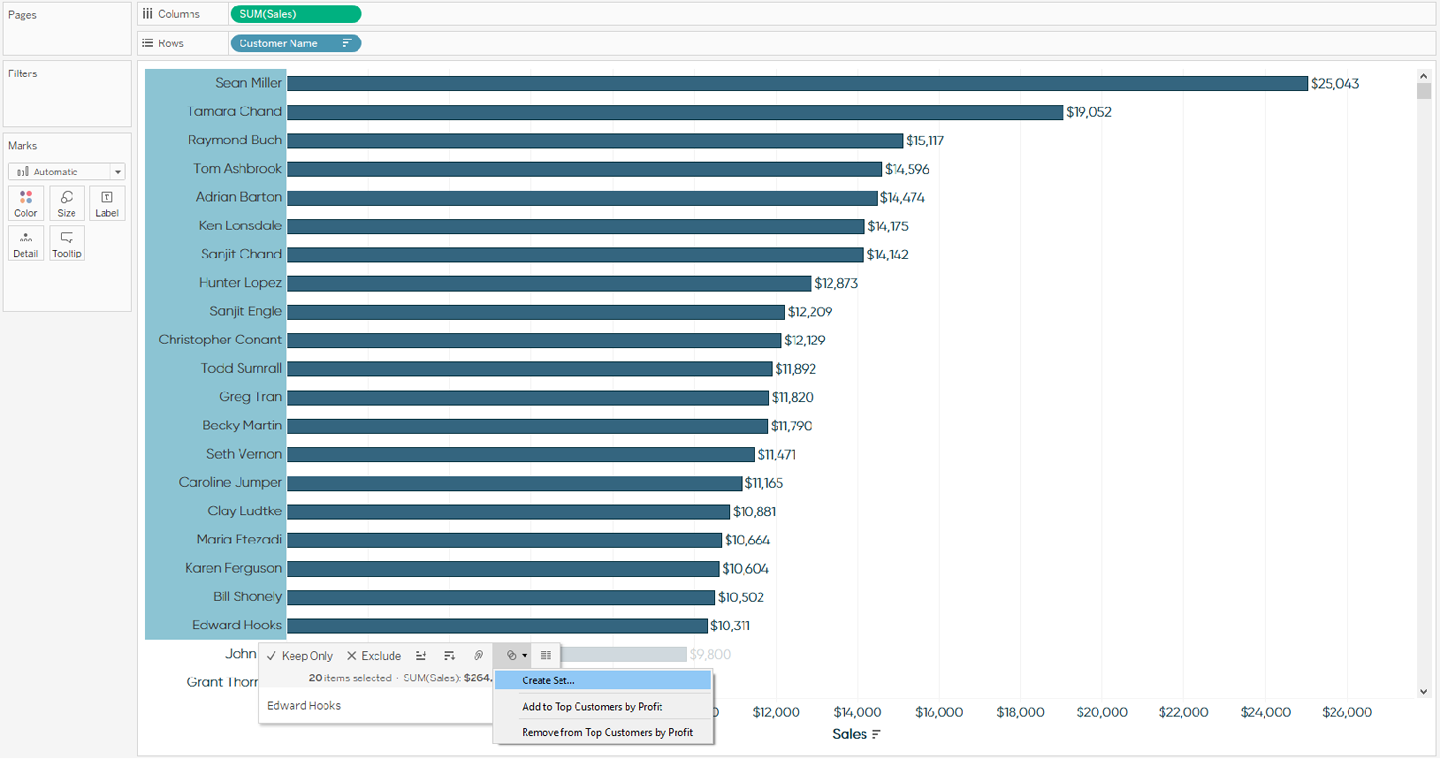Chapter 15. An Introduction to Sets
Tableau sets allow you to isolate specific segments of a dimension, which can then be used in several different ways to find insights in your data. This chapter provides instructions on how to build sets as well as five different ways they can be used to enhance your analyses.
Sets can be thought of as custom segments, but unlike dimension fields, they are always binary. In other words, you are either in the set or not. Other than that one restriction, sets can be created for just about anything. You can pick individual dimension members to place in a set, have sets be based on quantitative thresholds, created with the top or bottom performing dimension members, and more.
How to Create a Set in Tableau
Similar to creating filters in Tableau, sets can be created in a couple of different ways. The first and most straightforward method is to simply select the dimension members on a view, then hover over one of the dimension members, click the Venn diagram icon that appears, and choose Create Set. Here’s what that would look like if I wanted to create a set from the top 20 customers by sales in the Sample – Superstore dataset:

After clicking Create Set and giving the set a name, the set will appear in its own area on the Data pane. This set that tells us whether each customer name is in or out of the top 20 customers by sales is now available ...
Get Practical Tableau now with the O’Reilly learning platform.
O’Reilly members experience books, live events, courses curated by job role, and more from O’Reilly and nearly 200 top publishers.

